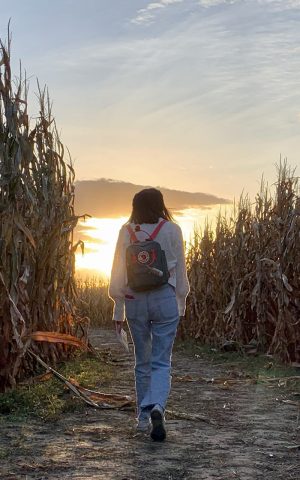Expectations That Damage
January 25, 2017
My story in the last edition of The Epic was “Mealtime Dynamics”. The assignment was to, with my partner, write a story investigating the feeling most on the staff held- that less families are eating dinner together now than 20 years ago. We were to find out why or why not the case is true, what causes families to eat or not eat dinner together, and why family dinners matters to people.
I was pretty set in agreement with the staff- it seemed to me that less families were eating dinner together.
I don’t think a feeling or hypothesis is a bad thing for a journalist to have when they embark into a story, but my problem was that in addition to my “feeling”, I was pretty sure I already knew why less families were eating dinner together, and felt like I just needed to prove my hypothesis by plugging in statistics from our poll.
So under this logic, my partner and I wrote our story’s skeleton and sent the poll out. To maximize efficiency, in the days in which the survey was collecting responses, we wrote our rough draft, leaving gaps for places where we’d use data from the poll to support our conclusions. The text was written, conclusions and all.
Then the results came in.
I thought the poll would prove that if people had a family member who stayed home during the day, chances were they’d eat dinner more frequently with their family than those who didn’t have someone at home. It was logical, after all. If people simply didn’t eat dinner because they were busy, having someone at home- someone who wasn’t as busy- would increase the number of shared meals. When the data showed that people who had someone at home actually ate dinner together less than those who had no one at home during the day, I was unpleasantly surprised and frustrated about having to rewrite that section of our story.
When we analyzed data regarding people who had cultural connections, I assumed we would find that people with cultural connections would eat dinner with their family more than those who didn’t. When the results proved the connection was only slight, and certainly not enough to make a significant difference, my pile of confusion and frustration only grew- not to mention that we then realized asking people if they had “cultural connections” is unclear and somewhat belittling to the standard culture of the group we asked. We then completely omitted that section of analysis. Throwing away hard work is never enjoyable.
I also expected a definite and clear contrast between eating habits of those who were involved in many extracurriculars and few extracurriculars. I figured if you involved in many, you would eat dinner with your family less than the people who were only involved in few. However, when the data rolled in it proved my conclusions wrong again: the frequency of eating with your family differed in the two groups by only 0.5 percent. That section of the story had to be rewritten to say “people find time to eat dinner around their extracurriculars just as much as those who aren’t very involved do,” instead of, “people are busy and thus dinner gets overshadowed”.
I’m lucky to have dealt with a story like this early on in my journalistic career, because it’s problem that plagues many journalists in modern media.
In September, David Von Drehle, who writes for TIME, spoke at the Kansas Scholastic Press Association at KU. The emphasis of his speech was the concept of ‘Fair Journalism’, and he drew connections between modern media sources not being fair and the fact that so many Americans no longer trust major news outlets.
The concept of fair journalism ties a lot into the adage, ‘You hear what you want to hear.’
A journalist with an assumption will likely only find and report, the side of the story that supports their views, just as readers may only read the evidence and stories they know support their views.
It is a journalist’s responsibility to report both sides of a case in order to show the reality of the story, just like the set up in a court of law. It’s up to the reader to decide what’s truth and what’s not, but the reporter themselves is merely a tool to deliver information. Omitting a side of a story is just another form of lying- and publishing lies ends in serious repercussions for news professionals of any kind.
It is harder to be a fair journalist, because it can mean going beyond the first story you hear and asking around until you can find different perspectives and opinions. But if a journalist isn’t ready to handle that responsibility, they should find a different career.
When I came face to face with the facts of the story I was supposed to be writing, it became clear that holding expectations and assumptions was detrimental and wrong. I was lucky my story was based on numbers because they clearly illustrated my error. Had I made these assumptions on a different kind of story, I could have left out critical information.
While it took some faith to trust numbers instead of my instincts, it was faith grounded in the ethics of fair journalism, whose motto is not, ‘hear what you want to hear’ but instead, ‘hear all that is spoken’.


